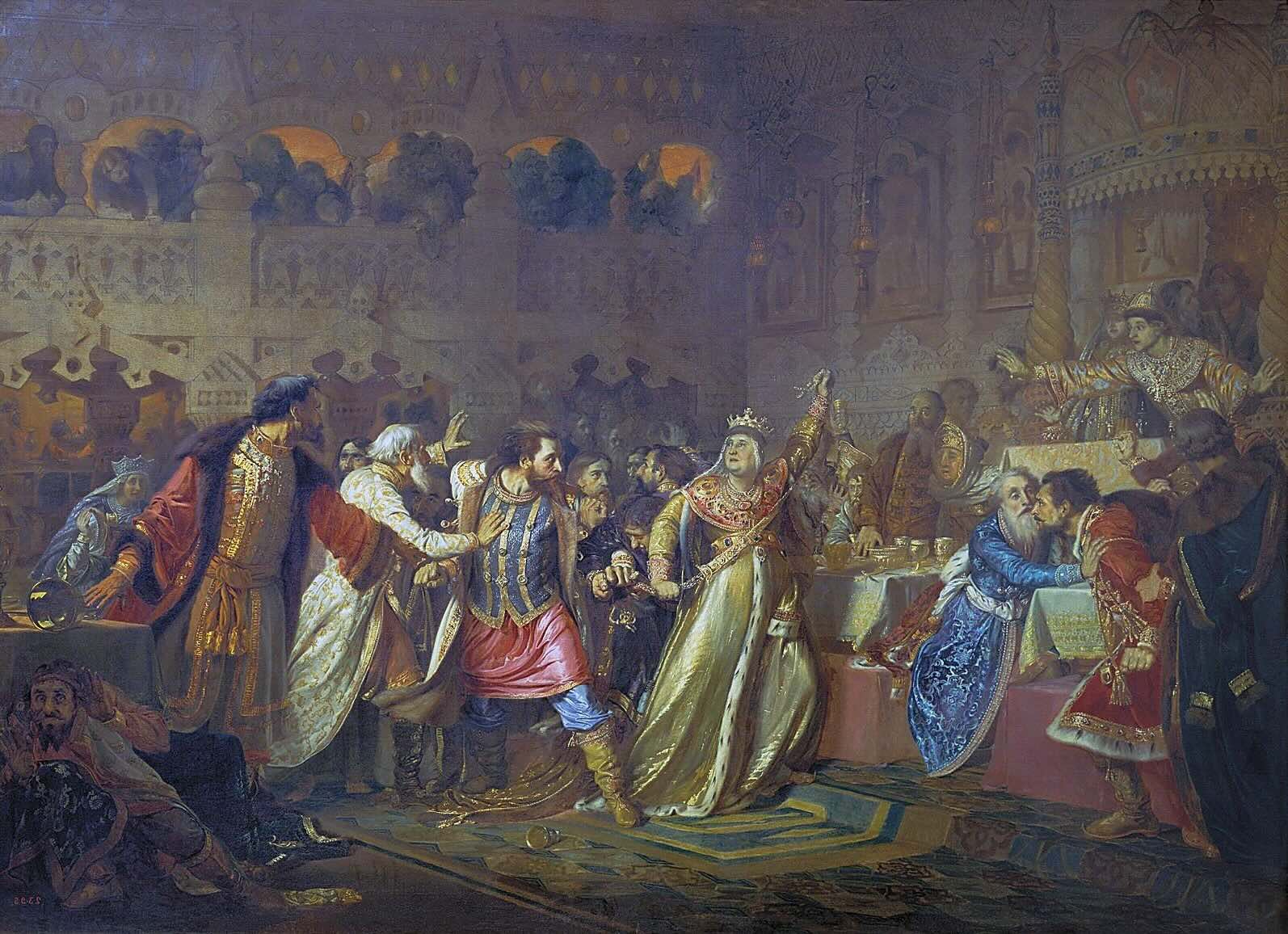
The Muscovite Civil War was a turbulent period in Russian history, marked by intense power struggles, shifting alliances, and widespread chaos. This conflict, which took place in the early 17th century, saw various factions vying for control over the Russian throne. The war's impact was profound, leading to significant political and social changes that shaped the future of Russia. Understanding the key events and figures of this era provides valuable insights into the complexities of Russian history. In this article, we'll delve into 25 fascinating facts about the Muscovite Civil War, shedding light on its causes, major battles, and lasting effects.
Key Takeaways:
- The Muscovite Civil War, also known as the Time of Troubles, was a chaotic period in Russia marked by famine, uprisings, and foreign invasions from the late 16th to early 17th century.
- The rise of the Romanov dynasty and the long-term consequences of the war shaped Russia's future, leading to reforms, a distrust of foreign powers, and the transformation of Russia into a major European power.
The Muscovite Civil War: An Overview
The Muscovite Civil War, also known as the Time of Troubles, was a period of political crisis in Russia. It spanned from the late 16th century to the early 17th century. This era was marked by famine, uprisings, and foreign invasions.
- The Muscovite Civil War began in 1598 after the death of Tsar Feodor I, the last ruler of the Rurik dynasty.
- Boris Godunov, who had been the de facto ruler during Feodor's reign, was elected Tsar by the Zemsky Sobor (a national assembly).
- Godunov's reign faced immediate challenges, including widespread famine from 1601 to 1603, which killed a third of the population.
- The famine led to social unrest and increased the number of bandits and rebels across the country.
- False Dmitry I, a pretender claiming to be the deceased Tsarevich Dmitry, gained support and invaded Russia in 1604.
Key Figures and Events
The Time of Troubles saw many key figures and events that shaped Russian history. These individuals and occurrences played pivotal roles in the unfolding drama.
- False Dmitry I was supported by the Polish-Lithuanian Commonwealth and some Russian nobles.
- In 1605, False Dmitry I successfully entered Moscow and was crowned Tsar.
- His reign was short-lived; he was assassinated in 1606 during a coup led by Vasili Shuisky.
- Vasili Shuisky declared himself Tsar but faced opposition from other pretenders and foreign invaders.
- False Dmitry II, another pretender, emerged and established a rival court in Tushino, near Moscow.
Foreign Involvement
Foreign powers played significant roles in the Muscovite Civil War, often exacerbating the internal strife.
- The Polish-Lithuanian Commonwealth saw the chaos as an opportunity to expand its influence.
- In 1609, the Polish King Sigismund III declared war on Russia, leading to the Polish-Muscovite War.
- Swedish forces also intervened, initially as allies of Shuisky but later pursuing their own interests.
- The Polish forces captured Moscow in 1610, and Sigismund's son, Władysław, was briefly proclaimed Tsar.
- The Russian people, however, resisted foreign rule, leading to the formation of volunteer armies.
The Rise of the Romanovs
Amidst the chaos, a new dynasty emerged that would rule Russia for over 300 years.
- In 1612, a national militia led by Prince Dmitry Pozharsky and merchant Kuzma Minin expelled the Polish forces from Moscow.
- The Zemsky Sobor convened in 1613 to elect a new Tsar, choosing Michael Romanov, a relative of the last Rurik Tsar.
- Michael Romanov's election marked the end of the Time of Troubles and the beginning of the Romanov dynasty.
- The Romanovs worked to restore order, rebuild the economy, and strengthen the central government.
- Michael's father, Patriarch Filaret, played a crucial role in stabilizing the country during his son's early reign.
Long-term Consequences
The Muscovite Civil War had lasting impacts on Russia's political, social, and economic landscape.
- The war devastated the Russian population, with many regions suffering from depopulation and economic decline.
- The Romanovs implemented reforms to centralize power and reduce the influence of the boyars (nobility).
- The Time of Troubles left a legacy of distrust towards foreign powers, influencing Russia's future foreign policy.
- The war also highlighted the importance of a strong, centralized authority to maintain stability in Russia.
- The Romanov dynasty would go on to transform Russia into a major European power, shaping its history for centuries to come.
The Final Word on the Muscovite Civil War
The Muscovite Civil War, a pivotal moment in Russian history, reshaped the nation's future. This conflict, marked by intense battles and political intrigue, saw the rise and fall of powerful figures. The war's outcome led to significant changes in governance, society, and culture. Understanding these events helps us appreciate the complexities of Russian history and the resilience of its people. The Muscovite Civil War isn't just a series of battles; it's a story of struggle, ambition, and transformation. By learning about this period, we gain insight into the forces that shaped modern Russia. This knowledge enriches our understanding of global history and the interconnectedness of past and present. So, next time you think about Russian history, remember the Muscovite Civil War and its lasting impact.
Frequently Asked Questions
Was this page helpful?
Our commitment to delivering trustworthy and engaging content is at the heart of what we do. Each fact on our site is contributed by real users like you, bringing a wealth of diverse insights and information. To ensure the highest standards of accuracy and reliability, our dedicated editors meticulously review each submission. This process guarantees that the facts we share are not only fascinating but also credible. Trust in our commitment to quality and authenticity as you explore and learn with us.
